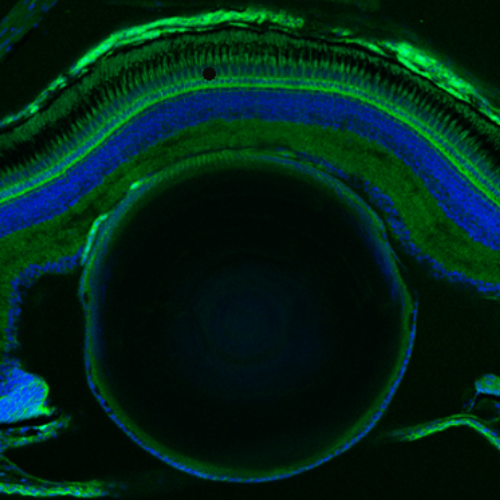penner/lgl2 is required for the integrity of the photoreceptor layer in the zebrafish retina.
The vertebrate retina is a complex tissue built from multiple neuronal cell types, which develop from a pseudostratified neuroepithelium. These cells are arranged into a highly organized and stereotypic pattern formed by nuclear and plexiform layers. The process of lamination as well as the maturation and differentiation of photoreceptor cells rely on the establishment and maintenance of apico-basal cell polarity and formation of adhesive junctions. Defects in any of these processes can result in impaired vision and are causally related to a variety of human diseases leading to blindness. While the importance of apical polarity regulators in retinal stratification and disease is well established, little is known about the function of basal regulators in retinal development. Here, we analyzed the role of Lgl2, a basolateral polarity factor, in the zebrafish retina. Lgl2 is upregulated in photoreceptor cells and in the retinal pigment epithelium by 72 h post fertilization. In both cell types, Lgl2 is localized basolaterally. Loss of zygotic Lgl2 does not interfere with retinal lamination or photoreceptor cell polarity or maturation. However, knockdown of both maternal and zygotic Lgl2 leads to impaired cell adhesion. As a consequence, severe layering defects occur in the distal retina, manifested by a breakdown of the outer plexiform layer and the outer limiting membrane. These results define zebrafish Lgl2 as an important regulator of retinal lamination, which, given the high degree of evolutionary conservation, may be preserved in other vertebrates, including human.

- Biol Open. 2019 Apr 23;8(4)
- 2019
- Cell Biology
- 31015218
- PubMed
Enabled by:
